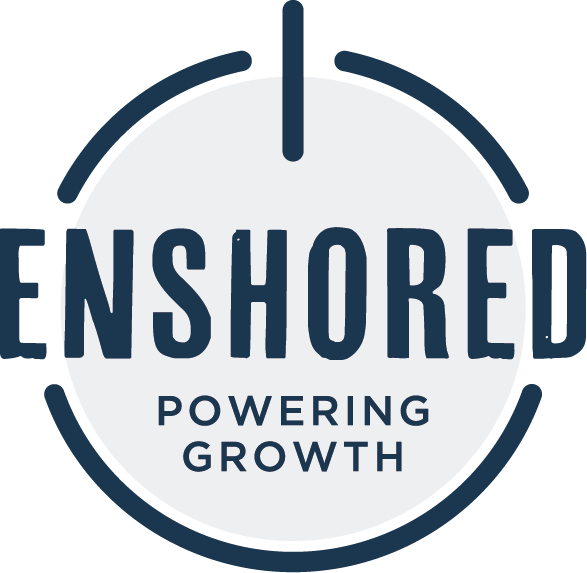Taking too long? Close loading screen.


These also depend on the business and industry; for example, companies in the same industry might have very different KPIs. Companies might work in very different ways, so it is crucial to understand what KPIs might be important.
These KPIs change drastically if a company chooses to outsource its customer service team. Although sometimes this might not be the best solution, it can help a company when there is too much demand from the customers’ side. First, let us look at the common KPIs found in both companies outsourcing their customer service and those that don’t.
Query Age: This measures the amount of time a ticket might be in a query or the time it takes to be solved when a customer reports it.
Call Frequency: This measures a single customer’s number of calls. This can help a company identify if its customer service agents are effective in their work. This can also highlight issues that might be recurring either because of product or service or the inefficiency of customer service agents.
First Call Solution: This identifies if the customer’s problem is resolved in their first call.
The Number of escalations: This measures how many times a single call has been escalated.
These are standard KPIs that many companies use with their customer service team, regardless of industry or if they are outsourced or not. This helps to measure employees’ performance and highlights other sectors of company-client correspondence.
Although these might also be used by any other company in any industry, by applying these to a company that outsources its customer service, we can better understand how the customer service section is working.
Longest waiting time for a call: This is an extremely important measurement. It measures the holding time and the longest holding time during the day. This is necessary to maintain customer loyalty. A company can improve this by hiring more agents.
Active Calls Waiting: This measurement provides an overview of calls currently in the queue. This is important for managers to understand how the work pace is going and make any improvements based on the analysis. This has two main functions; to ensure traffic is in line with the company’s objectives and to gather real-time information about calls.
Status indicators of the call center: This provides a better overview of the customer service team’s performance, as well as how good are the current capabilities of the customer service team.
Peak traffic time: This measures the busiest time of the day and allows you to prepare and plan agents to tackle this.
Cost per call: This has to do with the hourly rate of each customer service agent and the resources and the ability to generate a call. This KPI is important to measure any losses.
Average processing time: This KPI measures the average time of a call. This is essential to understand what workload is being put on customer service agents. This can also tackle performance issues and the lack of effectiveness of agents.
Call abandonment: This measures how many calls are disconnected even before an agent can get that call. This is good information to understand the number of disconnected calls relating to active and pending calls.
Customer Satisfaction: This is an important KPI, as it allows a direct overview of the customer service agents on the call. This can have a direct impact on the satisfaction of the clients.
Waiting time: Although customer service agents should avoid placing clients on hold, it is often necessary. This KPI measures the average time a client is put on hold. This can be very insightful when understanding low customer satisfaction and where to improve.
Customer calls are processed from the first minute: This measures the time a client has to wait before an agent picks up their call. This gives insight into reducing time and perhaps adding more customer service agents on the phones.
Post-call processing time: Post-call processing time is crucial because it helps determine how much time should be allocated to post-calls. This also shows how effective customer service agents can be during post-calls operations.
Call arrival rate: This indicates the number of incoming calls during a day for a month. This is a good KPI to understand trends and determine what days customers tend to call. A company, knowing this information, can reinforce those days with more agents.
Time lost due to technical or technological problems: Technology can do wonders if applied correctly. It is essential to measure this KPI to understand the downtime and to be able to fix any issues related to production loss. This is good because a company can mitigate errors by upgrading its technology.
Call Setup Success Rate (CSSR): Not every call is resolved. This KPI gives the company an idea of how many calls were not solved and why they were not solved. This can provide clear indications of flaws in the training of customer service agents.
Call completion rate: This KPI measures the number of calls completed against the number that failed to be resolved. This can also give the company a better idea of how to proceed if there are many unresolved calls.
Agent usage: This KPI is essential to understand how long a customer service agent takes when concluding the various tasks they need to do during a call with a customer. One of the outcomes is to understand better how productivity relates to the company’s goals and objectives.
Call back messages: This KPI metric measures the total number of messages left with a call back number. Although not all systems allow this, monitoring the number of customers who have left messages requesting a call back is vital for customer satisfaction.
Repeat calls: This KPI identifies recurring problems. If an issue occurs too often, a company can better understand how to proceed, and teams can prioritize the tasks to add the solution to it. At the same time, they will ensure that this does not have a negative impact on production or customer satisfaction.
Average Speed of Answer (ASA): This is the time a customer service agent takes to answer a call once the client leaves the interactive voice response system. This number must stay low to avoid higher abandonment calls. Implementing omnichannel strategies can help counter low numbers of ASA KPIs.
Abandonment Threshold: This metric measures the number of dropped calls after a threshold. Usually, this threshold is a certain amount of time. This KPI can be measured against the number of dropped calls to determine why customers drop the call.
After Call Work (ACW): Usually, after a call ends, there are tasks that need to be done by the customer service agent. Such as writing notes, sending emails, and submitting or processing orders. While a customer service representative is doing this, they can’t pick up other calls. It is important to keep this number as low as possible so that agents can focus on incoming calls and customer satisfaction.
Agent Utilization: This KPI compares the amount of time the agent spends on calls or after-call tasks to the amount logged in. In its essence, this KPI shows the amount of free time. This number shouldn’t be too high or too low. If that is the case, adjustments to staff need to be made.
A few main reasons a company would want to outsource their customer service are cost reduction, flexibility, speed to market, agility, and access to tools and processes.
Other reasons include improving customer service experience, scalability, and competitive advantage. Outsourcing is a big decision for a company, and a company needs to understand the pros and cons of that decision.
For many companies, outsourcing allows them to deal with high volumes of calls or unpredictable customer requests, or they might not have the resources to scale their customer service operations without outsourcing.
The ability to add customer service agents without making long-term commitments is a good reason because, by outsourcing, the company doesn’t need new office spaces, HR costs, or training costs. Nowadays, many companies follow work-from-home models that give companies the ability to provide cost-effective access to experienced customer service agents.
Offering omnichannel support is one of the main things in customer service nowadays. Companies need to have a presence in social messaging, live chat, social media, SMS, and more. The most popular ways to contact a company is through:
So that is why a company needs to find a customer service provider that works with the methods you use. Besides that, a good provider should focus on delivery experience, be knowledgeable in the company’s area of expertise and be quick enough to adapt to the company’s vision and goals.
Even though many of these interactions can be done through technology, this is not sufficient. Having customer service agents that understand what is being asked helps with customer satisfaction and churn rates. Having experienced agents is also a great thing as they will need to learn your product and services. Although you can implement chatbots and other interactive experiences, most customers will want to talk to someone.
When it comes to customer service, the ability to quickly adjust to other situations can increase the quality of customer service given to customers. If a company chooses pay-as-you-go models, this can be achieved. Many companies can create customized plans that fit the company’s needs and goals. This is important because companies can scale up or down as they see fit and have better control over their finances and costs.
Customer service is more than just communication between an agent and a customer. This business is in constant change, and people need to adapt quickly. Ideally, the service should increase as the company expands, and the customer service team needs to be consistent and improve their outcomes.
Outsourcing is good only if the company makes the right decisions when hiring a provider. The customer service provider must have:
Because customers should be the number one reason to invest in excellent customer service, the company should not look at any expenses when hiring a great customer service provider. You may read https://www.enshored.com/key-kpis-for-back-office-outsourcing/ for detailed kpi’s for more information. Finding a provider that shares the same ideas and works with the same channels can help your company grow its customer service through outsourcing.
Anticipating growth?
Access the tools, tech & team you need to scale globally.

Serious about scaling?
One call is all it takes to know if we’re a fit.
© 2024 Enshored · Privacy · GDPR · California · Cookies · Marketing by Klicker